Top 10 World's Most Popular Fairy Tales: Full Text, Life Lessons and Meaning
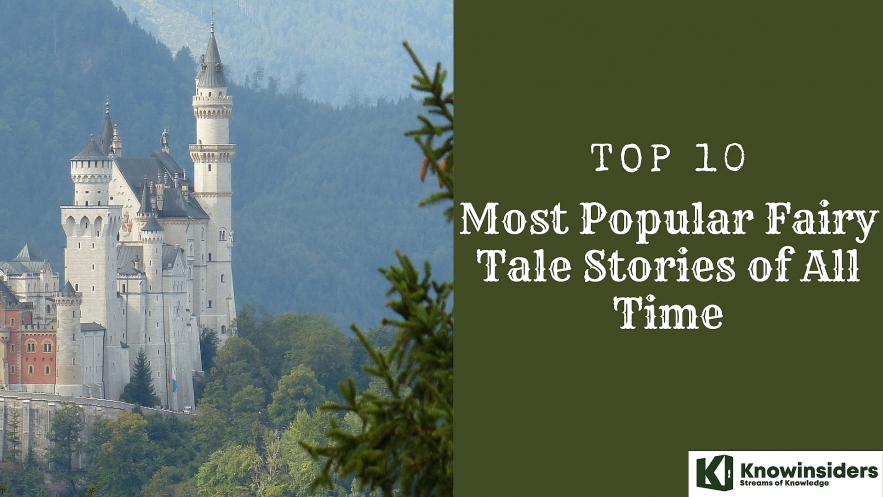 |
| Table Content |
Fairy tale stories are part and parcel of childhood. Endlessly retellable and filled with sometimes-questionable life lessons, fairy tale stories for kids have evolved through the years thanks to children’s books, movies, and, in no small part, Disney characters.
Mermaids, fairies, magic, and talking animals are what come to mind when thinking of Fairy Tales. These tales are so much more than just stories. They can also be used to teach your children about values, such as kindness and endurance, as seen below, and are one of the best tools for intricate learning.
What is fairy tale?
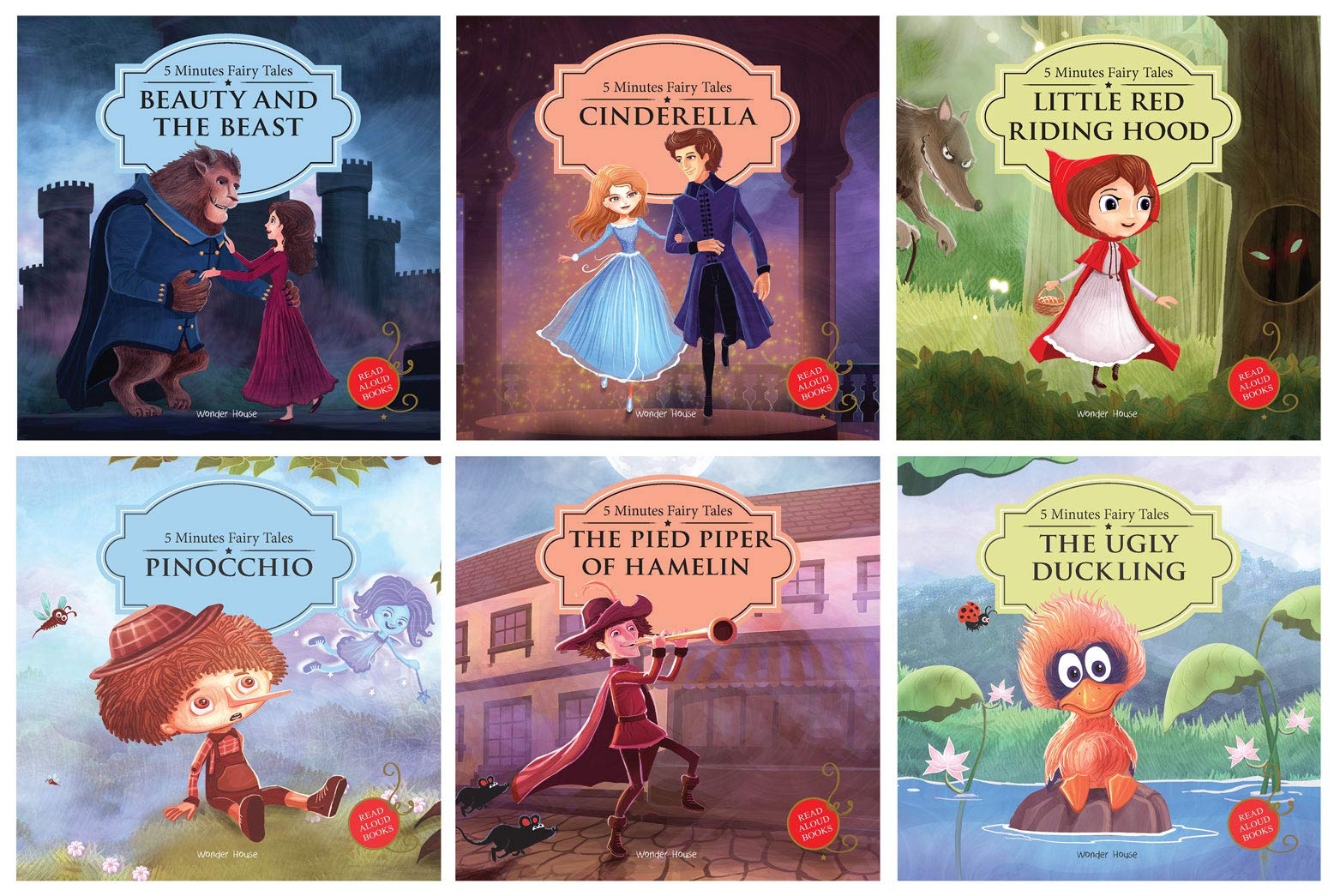 |
| Photo: Amazon |
A fairy tale, fairytale, wonder tale, magic tale, fairy story or Märchen is an instance of European folklore genre that takes the form of a short story. Such stories typically feature mythical entities such as dwarfs, dragons, elves, fairies, giants, gnomes, goblins, griffins, mermaids, talking animals, trolls, unicorns, or witches, and usually magic or enchantments. In most cultures, there is no clear line separating myth from folk or fairy tale; all these together form the literature of preliterate societies. Fairy tales may be distinguished from other folk narratives such as legends (which generally involve belief in the veracity of the events described) and explicit moral tales, including beast fables.
Fairy tales occur both in oral and in literary form; the name "fairy tale" ("conte de fées" in French) was first ascribed to them by Madame d'Aulnoy in the late 17th century. Many of today's fairy tales have evolved from centuries-old stories that have appeared, with variations, in multiple cultures around the world. The history of the fairy tale is particularly difficult to trace because only the literary forms can survive. Still, according to researchers at universities in Durham and Lisbon, such stories may date back thousands of years, some to the Bronze Age. Fairy tales, and works derived from fairy tales, are still written today.
Folklorists have classified fairy tales in various ways. The Aarne-Thompson classification system and the morphological analysis of Vladimir Propp are among the most notable. Other folklorists have interpreted the tales' significance, but no school has been definitively established for the meaning of the tales.
Top 20+ World's Best Fairy Tales (Full Text) Must Read For Kids Every Night
What Are Top 10 Most Popular Fairy Tale Stories of All Time?
1. Cinderella - Life Lessons and Meaning
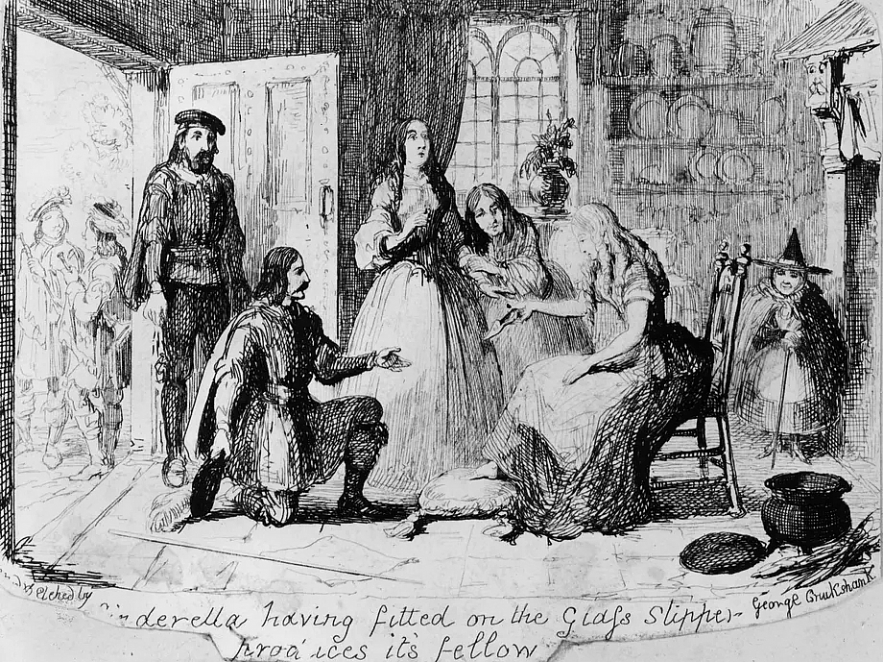 |
| Circa 1830: Cinderella, having tried on the glass slipper, produces its fellow. Etching by George Cruikshank as an illustration for Grimm's "Aschenputtel." (Photo by Hulton Archive/Getty Images) |
The first literary European version of the story was published in Italy by Giambattista Basile in his Pentamerone in 1634; the version that is now most widely known in the English-speaking world was published in French by Charles Perrault in Histoires ou contes du temps passé in 1697. Another version was later published by the Brothers Grimm in their folk tale collection Grimms' Fairy Tales in 1812."Cinderella", or "The Little Glass Slipper", is a folk tale with thousands of variants throughout the world. The protagonist is a young woman living in forsaken circumstances that are suddenly changed to remarkable fortune, with her ascension to the throne via marriage. The story of Rhodopis, recounted by the Greek geographer Strabo sometime between around 7 BC and AD 23, about a Greek slave girl who marries the king of Egypt, is usually considered to be the earliest known variant of the Cinderella story.
Although the story's title and main character's name change in different languages, in English-language folklore Cinderella is an archetypal name. The word Cinderella has, by analogy, come to mean one whose attributes were unrecognized: one who unexpectedly achieves recognition or success after a period of obscurity and neglect. The still-popular story of Cinderella continues to influence popular culture internationally, lending plot elements, allusions, and tropes to a wide variety of media.
Once there was a hardworking girl with a wicked stepmother and a heart of gold. She got a makeover from a fairy godmother, scored a dance with a prince, and snagged a happily ever after in a pretty sweet castle. This story crossed the globe for thousands of years, winning hearts wherever it went. Although the most familiar version of “Cinderella” was recorded by 17th-century French writer Charles Perrault, the well-respected scholarly website Sur La Lune Fairy Tales estimates there may be as many as 1,500 traditional variants of the tale around the world. Those include “The Girl with the Rose Red Slippers” from ancient Egypt and a ninth-century Chinese version. The story has inspired countless modern retellings, including Walt Disney’s iconic 1950 cartoon, the blockbuster film Pretty Woman, the novel and movie Ella Enchanted, and too many others to name. See which Cinderella quote made our list of favorite Disney movie quotes.
Plot:
A wealthy widower has a beautiful young daughter, a girl of unparalleled kindness and sweet temper. The gentleman marries a proud and haughty woman as his second wife. She has two daughters, who are equally vain and selfish. The girl is forced into servitude by her stepmother, where she is made to work day and night doing menial chores. After the girl's chores are done for the day, she curls up near the fireplace in an effort to stay warm. She often arises covered in ashes, giving rise to the mocking nickname "Cendrillon" (Cinderella) by her stepsisters. Cinderella bears the abuse patiently and does not tell her father, who would have scolded her.
One day, the prince invites all the people in the land to a royal ball. The two stepsisters gleefully plan their wardrobes for the ball, and taunt Cinderella by telling her that maids aren't invited to the ball.
As the two stepsisters and the stepmother depart to the ball, Cinderella cries in despair. Her Fairy godmother magically appears and immediately begins to transform Cinderella from house servant to the young lady she was by birth, all in the effort to get Cinderella to the ball. She turns a pumpkin into a golden carriage, mice into horses, a rat into a coachman, and lizards into footmen. She then turns Cinderella's rags into a beautiful jeweled gown, complete with a delicate pair of glass slippers. The Fairy Godmother tells her to enjoy the ball, but warns her that she must return before midnight, when the spells will be broken.
At the ball, the entire court is entranced by Cinderella, especially the Prince. At this first ball, Cinderella remembers to leave before midnight. Back home, Cinderella graciously thanks her Fairy Godmother. She then innocently greets the two stepsisters, who had not recognized her earlier, and talk of nothing but the beautiful girl at the ball.
Another ball is held the next evening, and Cinderella again attends with her Fairy Godmother's help. The prince has become even more infatuated with the mysterious woman at the ball, and Cinderella in turn becomes so enchanted by him she loses track of time and leaves only at the final stroke of midnight, losing one of her glass slippers on the steps of the palace in her haste. The Prince chases her, but outside the palace, the guards see only a simple country girl leave. The prince pockets the slipper and vows to find and marry the girl to whom it belongs. Meanwhile, Cinderella keeps the other slipper, which does not disappear when the spell is broken.
The prince's herald tries the slipper on all the women in the kingdom. When the herald arrives at Cinderella's home, the two stepsisters try in vain to win him over. Cinderella asks if she may try, but the two stepsisters taunt her. Naturally, the slipper fits perfectly, and Cinderella produces the other slipper for good measure. Cinderella's stepfamily pleads for forgiveness, and Cinderella agrees. Cinderella had hoped her step-family would love her always. Cinderella marries the prince and forgives her two stepsisters, then marrying them off to two wealthy noblemen of the court. They all lived happily ever after.
The first moral of the story is that beauty is a treasure, but graciousness is priceless. Without it, nothing is possible; with it, one can do anything.
However, the second moral of the story mitigates the first one and reveals the criticism that Perrault is aiming at: That "without doubt it is a great advantage to have intelligence, courage, good breeding, and common sense. These, and similar talents come only from heaven, and it is good to have them. However, even these may fail to bring you success, without the blessing of a godfather or a godmother."
Read More: Cinderella FairyTale - Full Text Story, Video in English Version, Life Lessons
2. Beauty and the Beast - Life Lessons and Meaning
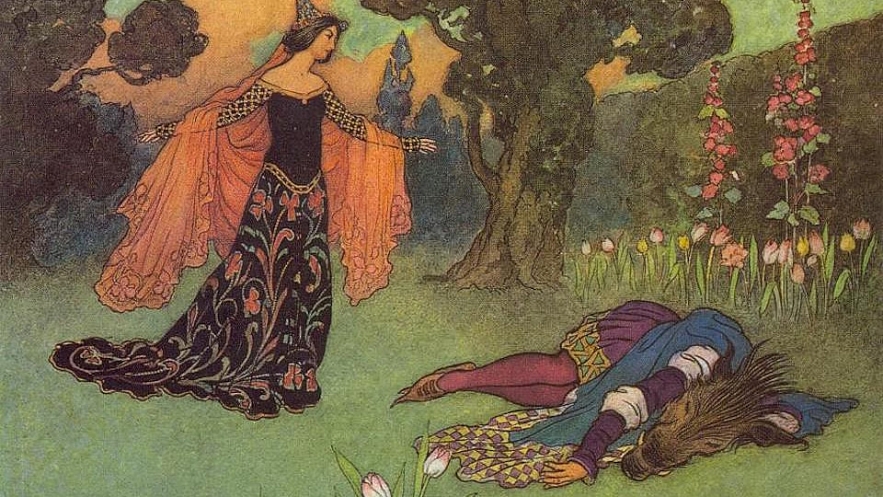 |
| An illustration by Warwick Goble for Beauty and the Beast, 1913 (Warwick Goble) |
While things were uncomfortable and frightening for Belle at first, she soon grew fond of the beast, as he had done nothing but treat her with kindness. When Belle found out her father was sick, she begged the beast to let her go to him and promised to return, but she was held up by the evil Gaston, a famous hunter from the village who wanted to marry Belle. When the village found out about the beast, they vowed to kill him and stormed his castle. Though he nearly died, he was saved and turned into a handsome prince because of Belle’s love for him. It turns out that he had been a prince who, along with his entire household, was cursed by a witch because he did not treat her with kindness. Belle and the Prince marry, and live a happy and peaceful life together. Originating in France, this is the story of Belle, a beautiful peasant girl who took the place of her father, when he was taken prisoner by a fierce beast.
From the prince’s curse, children can learn about the importance of being kind and that if they do not, they will suffer bad consequences. From Belle, we learn to value what is in a person’s heart, rather than their outward appearance.
Beauty and the Beast (French: La Belle et la Bête) is a fairy tale written by French novelist Gabrielle-Suzanne Barbot de Villeneuve and published in 1740 in La Jeune Américaine et les contes marins (The Young American and Marine Tales). Her lengthy version was abridged, rewritten, and published by Jeanne-Marie Leprince de Beaumont in 1756 in Magasin des enfants (Children's Collection) to produce the version most commonly retold and later by Andrew Lang in the Blue Fairy Book of his Fairy Book series in 1889. The fairy tale was influenced by Ancient Greek stories such as "Cupid and Psyche" from The Golden Ass, written by Lucius Apuleius Madaurensis in the second century AD, and The Pig King, an Italian fairytale published by Giovanni Francesco Straparola in The Facetious Nights of Straparola around 1550.
Variants of the tale are known across Europe. In France, for example, Zémire and Azor is an operatic version of the story, written by Marmontel and composed by Grétry in 1771, which had enormous success into the 19th century. Zémire and Azor is based on the second version of the tale. Amour pour amour (Love for love), by Pierre-Claude Nivelle de La Chaussée, is a 1742 play based on de Villeneuve's version. According to researchers at universities in Durham and Lisbon, the story originated about 4,000 years ago.
The oldest Beauty and the Beast story
It is thought by some scholars that Beauty and the Beast story may have a much longer history. It could be that it has roots in the tale of Cupid and Psyche, the ancient chronicle from the Latin novel Metamorphoses. This myth, written in the 2nd Century CE by Apuleius, is one of the oldest tales and many believe it to be the first ever literary fairy tale.
“A tale as old as time”
The Ancient Roman tale starts with Psyche’s banishment (by the jealous Venus) to a mountaintop, in order to be wed to a murderous beast. Cupid is sent to destroy her but instead falls in love and flies her away to his castle. There she is directed to never seek to see the face of her husband, who visits and makes love to her in the dark of night. Eventually Psyche succumbs to her curiosity but accidentally scars her husband with a candle. In attempted atonement, Psyche offers herself as a slave to Venus, and completes a set of impossible tasks. Completing the last task (seeking beauty from the Queen of the Underworld), Psyche opens the ‘beauty in a box’ and at once falls into a coma. Overcome with grief, Cupid rescues her. He begs Jupiter that she may become immortal, so that the two could be forever united.
Beauty’s Beasts from around the world
Myths and stories have travelled far and wide from generation to generation and we find similarities in these tales from all corners of the world.
The Woman Who Married a Snake closely reflects Cupid and Psych yet this first appeared in the Indian Panchatantra, a collection known to have existed in oral form well before it appeared in print in 500 AD. This helps to explain later ‘Beauty and the Beast’ stories, where the French beast is replaced by a snake in the Russian tale of The Enchanted Tsarévich, and the Chinese tale of The Fairy Serpent.
The beast appears as other creatures too. An English story by Sidney Oldall Addy, where the ‘beast’ is a ‘Small-tooth dog’, a Danish narrative of ‘Beauty and the Horse’, and the Swiss variant of ‘The Bear Prince.’ The Beast in Italian tale of Zelinda and the Monster is also no ordinary beast either, but a fire-breathing dragon who requests the presence of the poor man’s daughter.
“All at once there appeared a terrible monster with the figure of a dragon, and hissed with all his might” – Zelinda and the Monster
The tale has many variants from all around the world but remaining constant are the themes of envy unrewarded, of learning to love what may at first appear a ‘beast’.
The story of Beauty and the Beast has inspired and entertained generations of readers, writers and artists and continues to do so today.
“The happiness in store for them inspired each with equal delight. They could not entertain the least doubt of their mutual affection.” – Villeneuve’s La Belle et La Bête
Read More: Beauty And The Beast FairyTale: Full Text Story, Video in English Version, Life Lessons
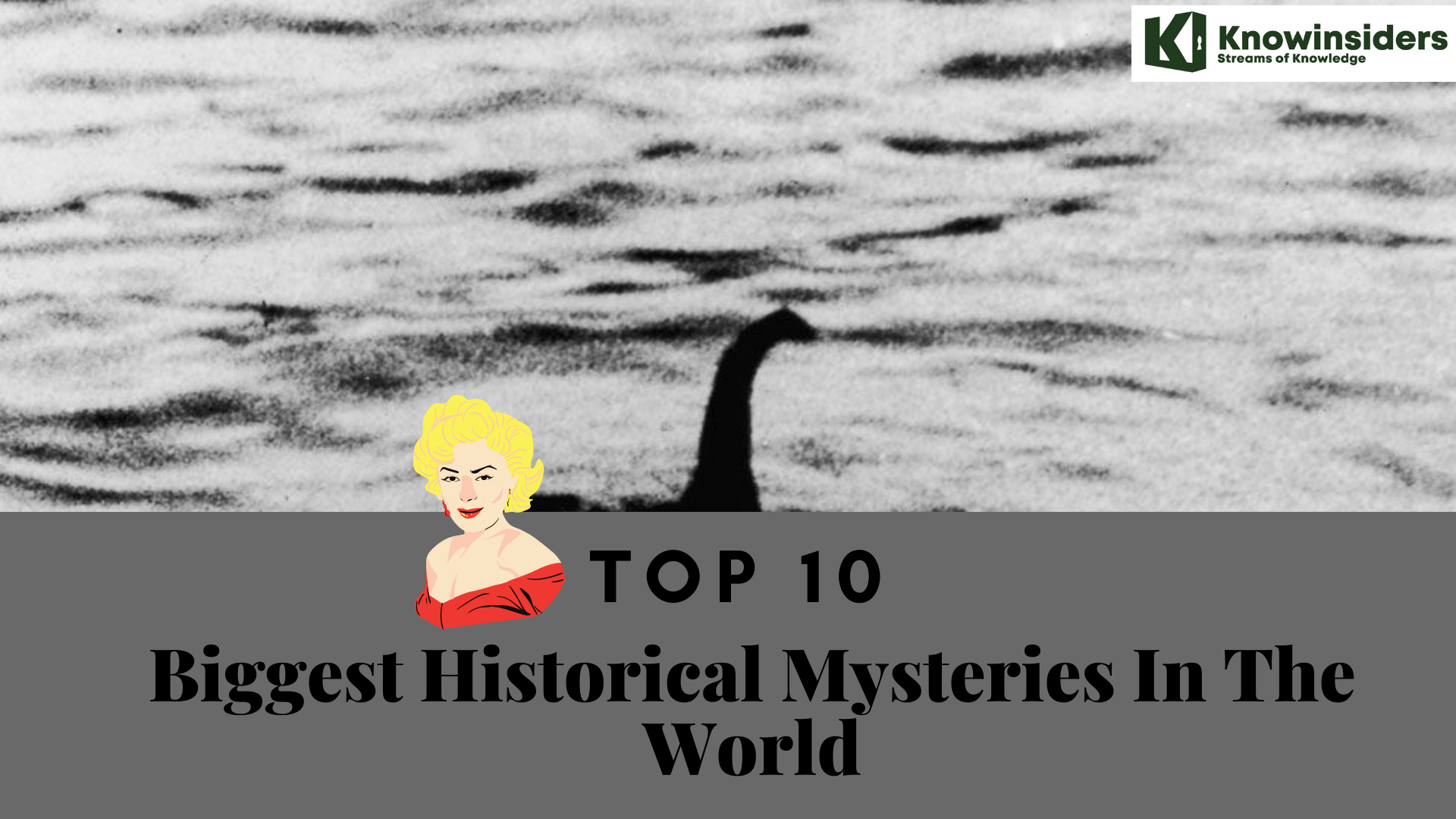 10 Biggest Historical Mysteries In The World That Can Not Be Solved 10 Biggest Historical Mysteries In The World That Can Not Be Solved |
3. Rapunzel - Life Lessons and Meaning
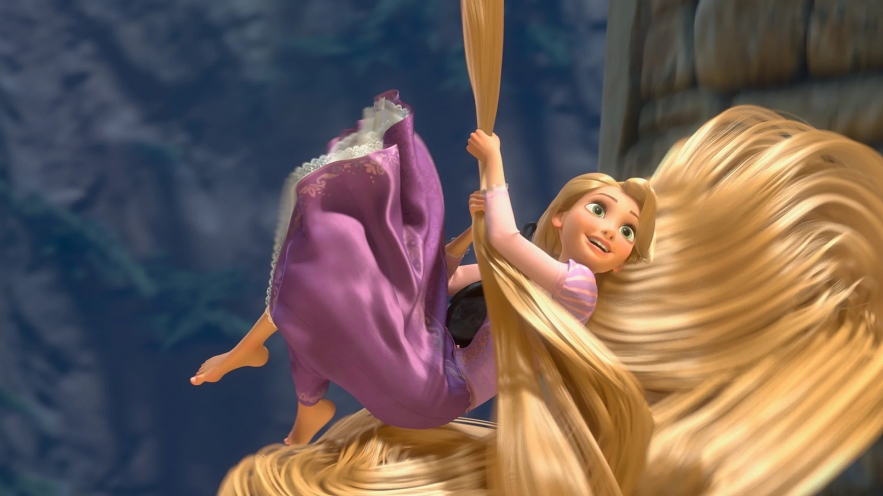 |
| Rapunzel |
The young girl, named Rapunzel by the witch, grew up to be very beautiful, but was kept locked away in the tower by the wicked witch, from which there was no way in or out. When the witch wanted to go in and see her, she would say “Rapunzel, Rapunzel, let down your hair, so that I might climb the golden stair.”A poor couple got themselves into big trouble when they stole fruit from their neighbour’s garden The neighbour, who was a witch, found out about the theft and demanded that they give her their child when she was born, to which the couple accepted.
One day, when Rapunzel was singing to pass the time, she happened to catch the attention of a young prince, who was so enchanted by her voice that he learned the secret of how to get to her. While Rapunzel was startled by him at first, they soon fell in love. It so happened that Rapunzel accidentally told the witch, “My, you are much heavier than my prince!” after which the witch, infuriated, chopped off her hair and threw her out into the wilderness. The prince was blinded by thorns and roamed the land, lamenting his beloved Rapunzel.
When they found each other again, the prince being lured by a beautiful voice, they cried for joy, and the tears which fell from Rapunzel’s eyes went into the prince’s, and cleansed them, enabling him to see again. The two lived together in peace for the rest of their lives.
The important thing to take away from this story is that one should never steal because it can have bad consequences, as in the case of Rapunzel’s parents, who lost their beautiful daughter because they were greedy and stole fruits.
The tale was published by the Brothers Grimm in Kinder- und Hausmärchen in 1812. Their source was a story published by Friedrich Schulz (1762–1798) in his Kleine Romane (1790). Earlier variants include Giambattista Basile's "Petrosinella" (1634/36), Mademoiselle de la Force's "Persinette" (1698), or Johann Gustav Büsching's "Das Mährchen von der Padde", published a few months before Grimm's version in Volks-Sagen, Mährchen und Legenden (1812).
Many scholars have interpreted “Maiden in the Tower” stories, which Rapunzel is a part of, as a metaphor for the protection of young women from pre-marital relationships by overzealous guardians. Scholars have drawn comparisons of the confinement of Rapunzel in her tower to that of a convent, where women's lives were highly controlled and they lived in exclusion from outsiders.
Scholars have also noted the strong theme of love conquering all in the story, as the lovers are united after years of searching in all versions after Persinette and are ultimately happily reunited as a family.
The seemingly unfair bargain that the husband makes with the sorceress in the opening of Rapunzel is a common convention in fairy tales, which is replicated in Jack and the Beanstalk when Jack trades a cow for beans or in Beauty and the Beast when Beauty comes to the Beast in return for a rose. Furthermore, folkloric beliefs often regarded it as dangerous to deny a pregnant woman any food she craved, making the bargain with the sorceress more understandable since the husband would have perceived his actions as saving his wife at the cost of his child. Family members would often go to great lengths to secure such cravings and such desires for lettuce and other vegetables may indicate a need for vitamins.
The “Maiden in the Tower” archetype has drawn comparisons to a possible lost matriarchal myth connected to the sacred marriage between the prince and the maiden and the rivalry between the maiden, representing life and spring, and the crone, representing death and winter.
Read More: Rapunzel FairyTale: Full Text Story, Video in English Version, Life Lessons
4. Little Red Riding Hood - Life Lessons and Meaning
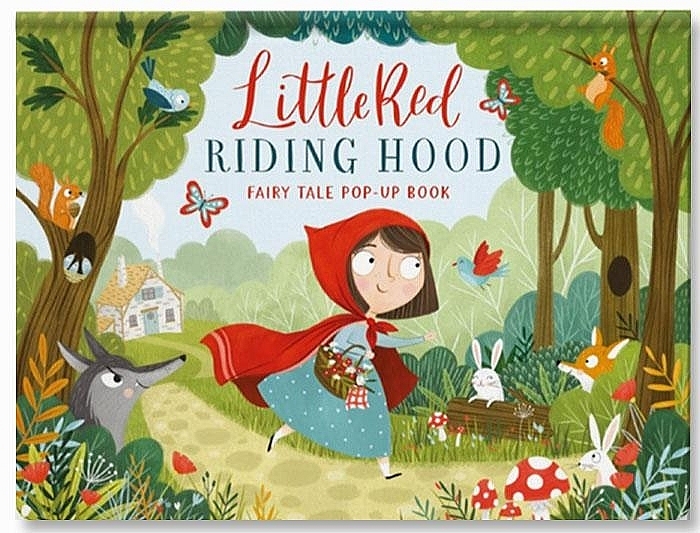 |
| Little Red Riding Hood |
"Little Red Riding Hood" is a European fairy tale about a young girl and a Big Bad Wolf. Its origins can be traced back to several pre-17th century European folk tales. The two best known versions were written by Charles Perrault and the Brothers Grimm.
The story has been changed considerably in various retellings and subjected to numerous modern adaptations and readings. Other names for the story are: "Little Red Cap" or simply "Red Riding Hood". It is number 333 in the Aarne–Thompson classification system for folktales.
The story revolves around a girl called Little Red Riding Hood. In Perrault's versions of the tale, she is named after her red hooded cape/cloak that she wears. The girl walks through the woods to deliver food to her sickly grandmother (wine and cake depending on the translation). In the Grimms' version, her mother had ordered her to stay strictly on the path.
A Big Bad Wolf wants to eat the girl and the food in the basket. He asks her where she's going. She says she's going to her grandma to deliver food.He secretly stalks her behind trees, bushes, shrubs, and patches of little and tall grass. He approaches Little Red Riding Hood, who naively tells him where she is going. He suggests that the girl pick some flowers as a present for her grandmother, which she does. In the meantime, he goes to the grandmother's house and gains entry by pretending to be her. He swallows the grandmother whole (in some stories, he locks her in the closet) and waits for the girl, disguised as the grandmother.
When the girl arrives, she notices that her grandmother looks very strange. Little Red then says, "What a deep voice you have!" ("The better to greet you with", responds the wolf), "Goodness, what big eyes you have!" ("The better to see you with", responds the wolf), "And what big hands you have!" ("The better to embrace you with", responds the wolf), and lastly, "What a big mouth you have" ("The better to eat you with!", responds the wolf), at which point the wolf jumps out of the bed and eats her, too. Then he falls asleep. In Charles Perrault's version of the story (the first version to be published), the tale ends here. However, in later and more well-known versions, the story continues generally as follows:
A woodcutter in the French version, but a hunter in the Brothers Grimm and traditional German versions, comes to the rescue with an axe, and cuts open the sleeping wolf. Little Red Riding Hood and her grandmother emerge shaken, but unharmed. Then they fill the wolf's body with heavy stones. The wolf awakens and attempts to flee, but the stones cause him to collapse and die. In Grimm's version, the wolf leaves the house and tries to drink out of a well, but the stones in his stomach cause him to fall in and drown.
Sanitized versions of the story have the grandmother locked in the closet instead of being eaten and some have Little Red Riding Hood saved by the lumberjack as the wolf advances on her rather than after she is eaten, where the woodcutter kills the wolf with his axe.
The tale makes the clearest contrast between the safe world of the village and the dangers of the forest, conventional antitheses that are essentially medieval, though no written versions are as old as that. It also warns about the dangers of not obeying one's mother (at least in Grimms' version).
A History of Little Red Riding Hood
Durham University anthropologist Jamie Tehrani traced Red Riding Hood’s roots to find the origins. He found that the story is not only a lot older than the Brothers Grimm (who are credited with creating the version most of us know today), but it can also be traced to multiple parts of the world. Every part of the world tells the story with its own small deviations.
Interestingly, the morals seem to speak to cultural values. Take the “classic” Grimm’s version—readers learn that children like Little Red Riding Hood shouldn’t talk to strangers. The Grimm story also teaches children to always obey a parent’s instructions. Little Red Riding Hood only gets into a conversation with the wolf because she strays off the path to her grandmother’s house, something her mother had strictly warned against. Religiously and culturally, “don’t speak to strangers” and “stay on the straight and narrow” are both common expressions in the Western world.
Older versions like the 14th century stories from Italy and Austria don’t leave out any of the bloody details. In one, Little Red Riding Hood is tricked into eating her own grandmother, and there are certainly no happy endings in sight (perhaps inspired by the true story of Peter Stumpp, the “Werewolf of Bedburg”). In Charles Perrault’s version from 1697, Little Red Riding Hood gets into bed with “Grandma” before getting eaten. Perrault’s story is more of a warning to young girls against being seduced by men’s trickery.
If you can believe it, when Wilhelm and Jacob Grimm got their hands on this story, they decided to make it a little more lighthearted! They at least allowed a happy ending, with the huntsman saving the day. As time goes by, we see more and more variations pop up. Each new take presents different perspectives, different protagonists, and different settings.
Which brings us to Bethan Woollvin’s Little Red. In this retelling, Little Red does meet a wolf in the woods on her way to her grandma’s house, but forget the naïve girl you thought you knew. Little Red is just as perceptive and cunning as her enemy. She knows exactly what this wolf is up to, and she isn’t going to let him get away with it. When Little Red sees the giant furry creature dressed in her grandma’s clothes, barely fitting in grandma’s bed, and very obviously NOT grandma, she knows exactly what to do. The prospect of facing the wolf might have scared some little girls, but not this little girl!
Little Red relies on her own bravery and wit, and she does just fine by herself, thank you very much! We love that this subversive retelling gives little girls all the power.
Read More: Little Red Riding Hood FairyTale: Full Text Story, Video in English Version and Life Lessons
5. Snow White and the Seven Dwarfs - Life Lessons and Meaning
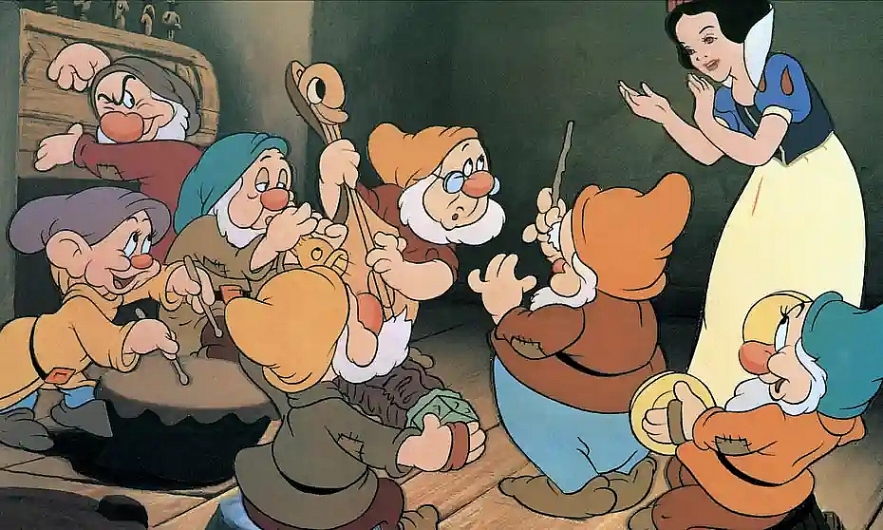 |
| Snow White and the Seven Dwarfs |
A fair princess indeed, Snow White was named for the colour of her skin, which was white as snow, hair as black as ebony, and lips as red as a rose. Her father, having lost his wife, married again, and this new queen was as beautiful as she was proud. She would often consult her mirror and ask “Mirror Mirror, on the wall; Who is the fairest of them all?”
As Snow White began to grow, she became more and more beautiful, and the queen’s magic mirror soon began to say so. Enraged and filled with jealousy, the queen sent a huntsman to kill Snow White and bring her her heart.
The Huntsman, pitying the innocent Snow White, told her to run away and never come back. He, instead, delivered to the queen the heart of a pig. When the queen consulted her mirror and found that she had been tricked, she determined to kill Snow White herself and so began to prepare her poisoned apple.
Snow White, in the meantime, found a place with seven dwarfs, whom she lived with and cared for. One day, when they were at work in the mines, the queen went to see Snow White, disguised as an old peasant woman selling apples. Snow White was convinced to take a bite out of the apple and instantly fell down, as if dead. When the dwarfs found her, they were distraught and laid her in a glass coffin.
One day, as a prince was passing by, he noticed the dwarfs mourning over a beautiful sleeping girl (for she remained as beautiful as she ever was) and was mesmerised by her beauty. He kissed her hand to bid her farewell, and at that moment, the apple dislodged itself, and Snow White opened her eyes. The prince was so happy that he asked for her hand in marriage and she accepted. There was a grand celebration, and they lived and reigned happily together. The evil queen became sick from her envy and eventually died.
We must always remember, from the fate of the queen, that if you lust after physical beauty, you will, indeed lose your peace, and be quite unhappy when you are not considered the most beautiful. On the contrary, kindness and gentleness win the hearts of many.
"Snow White" is an 18th-century German fairy tale that is today known widely across the Western world. The Brothers Grimm published it in 1812 in the first edition of their collection Grimms' Fairy Tales and numbered as Tale 53. The original German title was Sneewittchen, a Low German form, but the first version gave the High German translation Schneeweißchen, and the tale has become known in German by the mixed form Schneewittchen. The Grimms completed their final revision of the story in 1854.
The fairy tale features such elements as the magic mirror, the poisoned apple, the glass coffin, and the characters of the Evil Queen and the Seven Dwarfs. The seven dwarfs were first given individual names in the 1912 Broadway play Snow White and the Seven Dwarfs and then given different names in Walt Disney's 1937 film Snow White and the Seven Dwarfs. The Grimm story, which is commonly referred to as "Snow White", should not be confused with the story of "Snow-White and Rose-Red" (in German "Schneeweißchen und Rosenrot"), another fairy tale collected by the Brothers Grimm.
In the Aarne–Thompson folklore classification, tales of this kind are grouped together as type 709, Snow White. Others of this kind include "Bella Venezia", "Myrsina", "Nourie Hadig", "Gold-Tree and Silver-Tree", "The Young Slave", and "La petite Toute-Belle".
Read More: Snow White and the Seven Dwarfs: Full Text Story, Video in English Version, Life Lessons
6. Jack and the Beanstalk - Life Lessons and Meaning
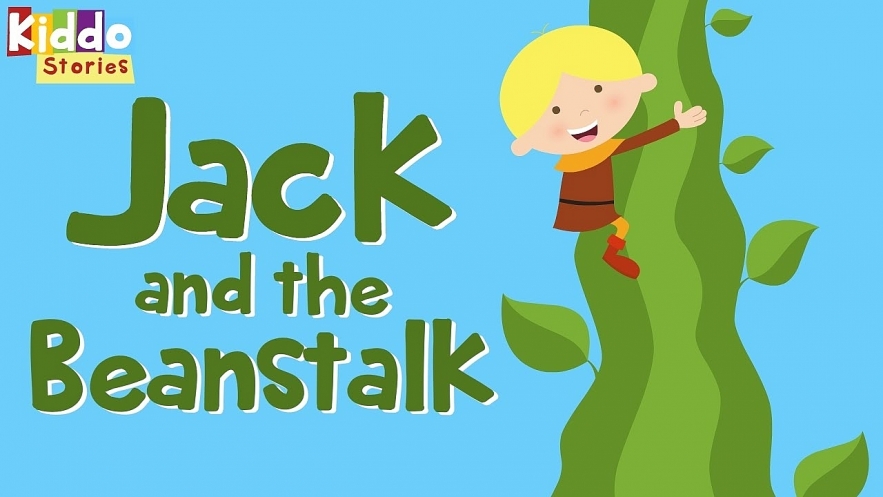 |
| Jack and the Beanstalk |
"Jack and the Beanstalk" is an English fairy tale. It appeared as "The Story of Jack Spriggins and the Enchanted Bean" in 1734 and as Benjamin Tabart's moralized "The History of Jack and the Bean-Stalk" in 1807. Henry Cole, publishing under pen name Felix Summerly, popularized the tale in The Home Treasury (1845), and Joseph Jacobs rewrote it in English Fairy Tales (1890). Jacobs' version is most commonly reprinted today, and is believed to be closer to the oral versions than Tabart's because it lacks the moralizing.
"Jack and the Beanstalk" is the best known of the "Jack tales", a series of stories featuring the archetypal Cornish and English hero and stock character Jack.
According to researchers at Durham University and Universidade Nova de Lisboa, the story originated more than five millennia ago, based on a wide-spread archaic story form which is now classified by folklorists as ATU 328 The Boy Who Stole Ogre's Treasure.
Young Jack trades the family’s only cow for a handful of magic beans. When a giant beanstalk sprouts overnight, Jack seizes the chance to climb to a giant’s castle and steal all of his magical possessions. The story we know is from England, and Jack himself is English. (Need proof? Consider the famous line “fee-fi-fo-fum, I smell the blood of an Englishman.”) But as Sur La Lune Fairy Tales points out, there are fairy tale stories based on this tale found among Europeans, Scandinavians, and Indigenous groups across Canada. And don’t forget Asia’s tale of the branch of the Bodhi of Buddha, which quickly grows skyward once planted.
As for modern adaptations, Jack (along with some of these other fairy tale characters) has a major role in the musical and movie Into the Woods and has had his story told through the live-action films Jack and the Beanstalk (2010) and Jack the Giant Slayer (2013). But unlike other fairy tale stories that have been told and retold (and retold again), this one still poses an exciting action-adventure opportunity for filmmakers.
The original story portrays a "hero" gaining the sympathy of a man's wife, hiding in his house, robbing him, and finally killing him. In Tabart's moralized version, a fairy woman explains to Jack that the giant had robbed and murdered his father justifying Jack's actions as retribution (Andrew Lang follows this version in the Red Fairy Book of 1890).
Jacobs gave no justification because there was none in the version he had heard as a child and maintained that children know that robbery and murder are wrong without being told in a fairy tale, but did give a subtle retributive tone to it by making reference to the giant's previous meals of stolen oxen and young children.
Many modern interpretations have followed Tabart and made the giant a villain, terrorizing smaller folk and stealing from them, so that Jack becomes a legitimate protagonist. For example, the 1952 film starring Abbott and Costello the giant is blamed for poverty at the foot of the beanstalk, as he has been stealing food and wealth and the hen that lays golden eggs originally belonged to Jack's family. In other versions, it is implied that the giant had stolen both the hen and the harp from Jack's father.
Brian Henson's 2001 TV miniseries Jack and the Beanstalk: The Real Story not only abandons Tabart's additions but vilifies Jack, reflecting Jim Henson's disgust at Jack's unscrupulous actions.
Read More: Jack and the Beanstalk: Full Text Story, Video in English Version, Life Lessons
7. Sleeping Beauty - Life Lessons and Meaning
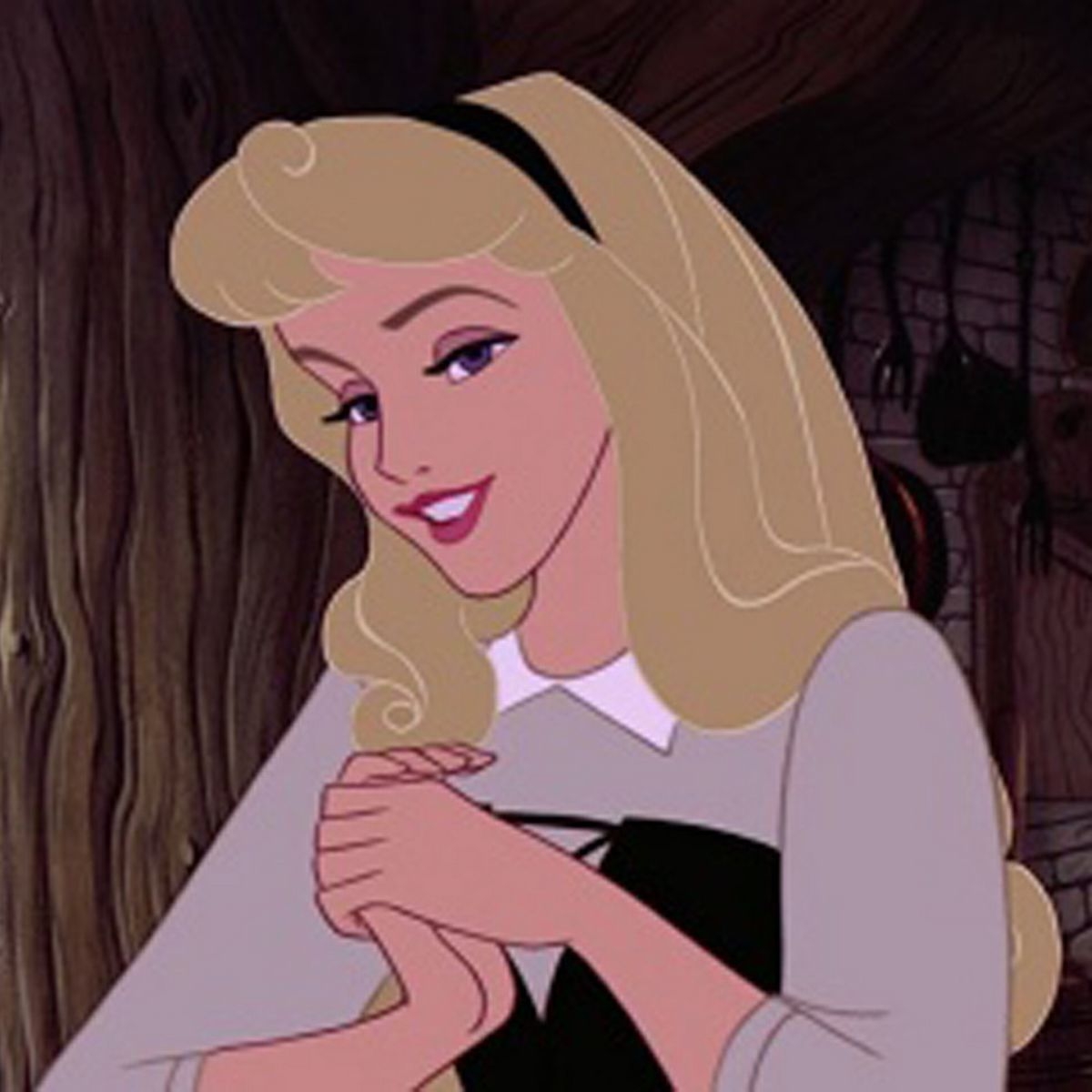 |
| Photo: Disney |
The folktale begins with a princess whose parents are told by a wicked fairy that their daughter will die when she pricks her finger on a particular item. In Basile's version, the princess pricks her finger on a piece of flax. In Perrault's and the Grimm Brothers' versions, the item is a spindle.
The parents rid the kingdom of these items in the hopes of protecting their daughter, but the prophecy is fulfilled regardless. Instead of dying, as was foretold, the princess falls into a deep sleep. After some time, she is found by a prince and is awakened. In Giambattista Basile's version of Sleeping Beauty, Sun, Moon, and Talia, the sleeping beauty, Talia, falls into a deep sleep after getting a splinter of flax in her finger. She is discovered in her castle by a wandering king, who "carrie[s] her to a bed, where he gather[s] the first fruits of love." He leaves her there and she later gives birth to twins.
According to Maria Tatar, there are versions of the story that include a second part to the narrative that details the couple's troubles after their union; some folklorists believe the two parts were originally separate tales.
The second part begins after the prince and princess have had children. Through the course of the tale, the princess and her children are introduced in some way to another woman from the prince's life. This other woman is not fond of the prince's new family, and calls a cook to kill the children and serve them for dinner. Instead of obeying, the cook hides the children and serves livestock. Next, the other woman orders the cook to kill the princess. Before this can happen, the other woman's true nature is revealed to the prince and then she is subjected to the very death that she had planned for the princess. The princess, prince, and their children live happily ever after.
Sleeping Beauty (French: La Belle au bois dormant), or Little Briar Rose (German: Dornröschen), also titled in English as The Sleeping Beauty in the Woods, is a classic fairy tale about a princess who is cursed to sleep for a hundred years by an evil fairy, to be awakened by a handsome prince at the end of them. The good fairy, realizing that the princess would be frightened if alone when she awakens, uses her wand to put every living person and animal in the palace asleep, to awaken when the princess does.
The earliest known version of the story is found in the narrative Perceforest, composed between 1330 and 1344. The tale was first published by Giambattista Basile in his collection of tales titled The Pentamerone (published posthumously in 1634). Basile's version was later adapted and published by Charles Perrault in Histoires ou contes du temps passé in 1697. The version that was later collected and printed by the Brothers Grimm was an orally transmitted version of the literary tale published by Perrault.
The Aarne-Thompson classification system for folktales classifies "Sleeping Beauty" as being a 410 tale type, meaning it includes a princess who is forced into an enchanted sleep and is later awakened reversing the magic placed upon her. The story has been adapted many times throughout history and has continued to be retold by modern storytellers throughout various media.
Read More: Sleeping Beauty: Full Text Story, Video in English Version, Life Lessons
8. The Ugly Duckling - Life Lessons and Meaning
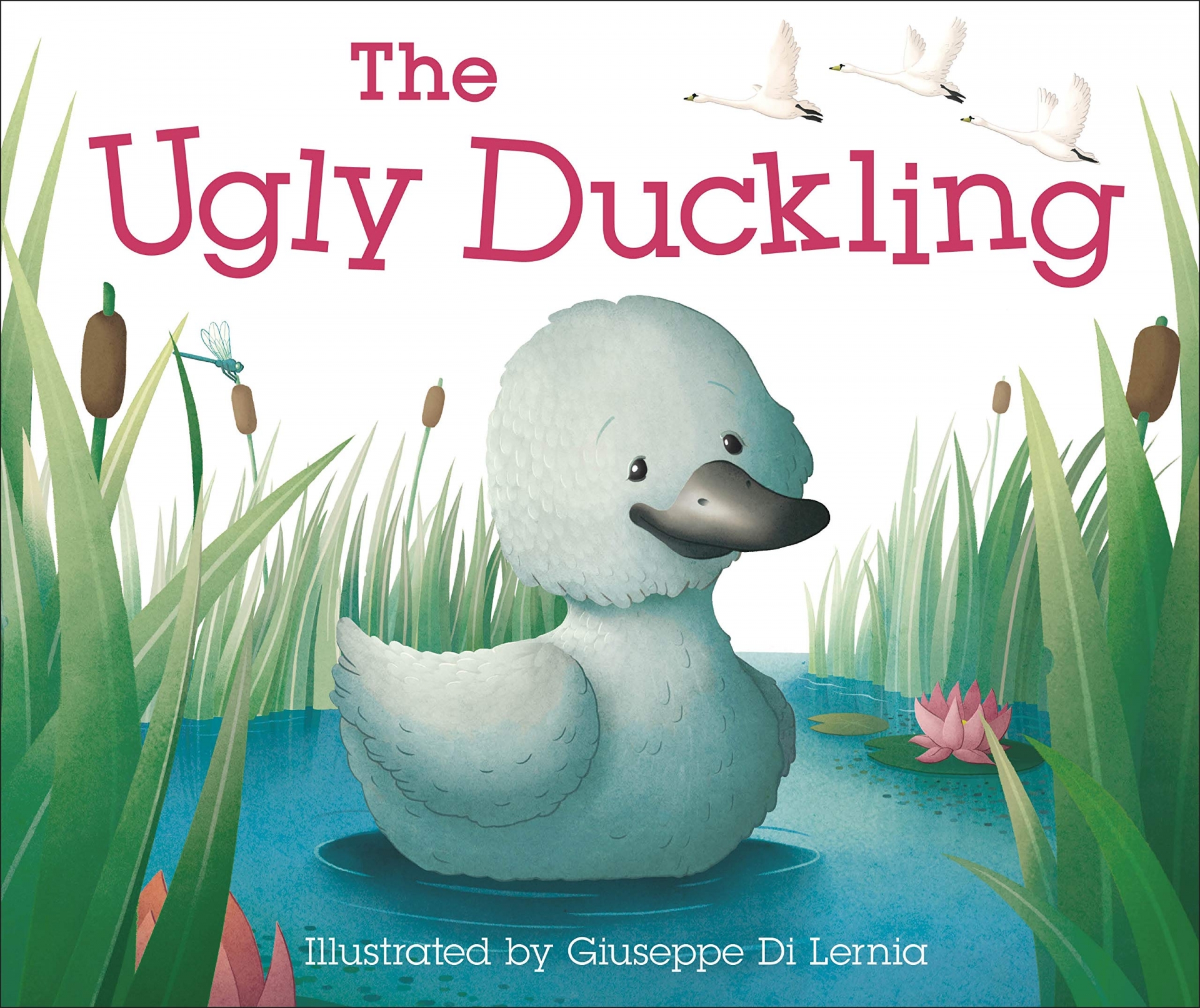 |
| Photo: Fahasa |
This heart-warming tale, penned by Hans Christian Anderson, tells of a little duckling that was called ugly by everyone at the farm where he lived. He was bullied and mistreated by everyone, until one day he was forced to run away. The miserable little duckling was mocked and scorned by everyone who met him, and found himself wandering through the frozen winter, alone and barely managing to survive. When he flew to a lake to swim, he met three beautiful swans who greeted him cheerfully. He was confused by their friendly greeting, for all this time he had been chased away.
When he looked down at his reflection in the water, he was surprised to see that he had grown into a beautiful swan! A little girl who was throwing breadcrumbs for the noble swans even said that he was the most beautiful of all.
We should never judge others by their appearances because it is not appearances that matter. Not only can one develop beauty over time, but true beauty is that which lies within, so if we endure and keep moving forward in life, as the little duckling did, then we may, one day, find ourselves to be considered the most beautiful of all.
"The Ugly Duckling" (Danish: Den grimme ælling) is a Danish literary fairy tale by Danish poet and author Hans Christian Andersen (1805–1875). It was first published on 11 November 1843 in New Fairy Tales. First Volume. First Collection, with three other tales by Andersen in Copenhagen, Denmark to great critical acclaim. The tale has been adapted to various media including opera, musical, and animated film. The tale is an original story by Andersen.
Andersen first conceived the story in 1842 while enjoying the beauty of nature during his stay at the country estate of Bregentved, and lavished a year's worth of attention upon it. He initially considered "The Young Swans" as the tale's title but, not wanting to spoil the element of surprise in the protagonist's transformation, discarded it for "The Ugly Duckling". He later confessed that the story was "a reflection of my own life", and, when the critic Georg Brandes questioned Andersen about whether he would write his autobiography, the poet claimed that it had already been written — "The Ugly Duckling".
"The Ugly Duckling" was first published in Copenhagen, Denmark 11 November 1843 in New Fairy Tales. First Volume. First Collection (Nye Eventyr. Første Bind. Første Samling). For the first time the phrase "told for children" was not part of the title—an omission Andersen scholar Jackie Wullschlager believes exhibited a new confidence on Andersen's part: "These [tales] were the most mature and perfectly constructed tales he had written, and though some of them at once became, and have remained, favorites of children, Andersen here melds together the childlike and the profound with exceptional artistry." The first edition of 850 was sold out by December 18, and Reitzel planned another 850.
The tale was fourth and last in the volume that included (in contents order), "The Angel" ("Englen"), "The Nightingale" ("Nattergalen"), and "The Sweethearts; or, The Top and the Ball" ("Kjærestefolkene [Toppen og bolden]"). The volume sold out almost immediately and Andersen wrote on December 18, 1843: "The book is selling like hot cakes. All the papers are praising it, everyone is reading it! No books of mine are appreciated in the way these fairy tales are!" Andersen promoted the tale by reading it aloud at social gatherings. The tale was republished 18 December 1849 in Fairy Tales. 1850. (Eventyr. 1850.) and again 15 December 1862 in Fairy Tales and Stories. First Volume. 1862. (Eventyr og Historier. Første Bind. 1862.) The tale has since been translated into various languages and published around the world and has become the most famous story by Andersen.
Read More: The Ugly Duckling: Full Text Story, Video in English Version, Life Lessons
9. The Frog Prince - Life Lessons and Meaning
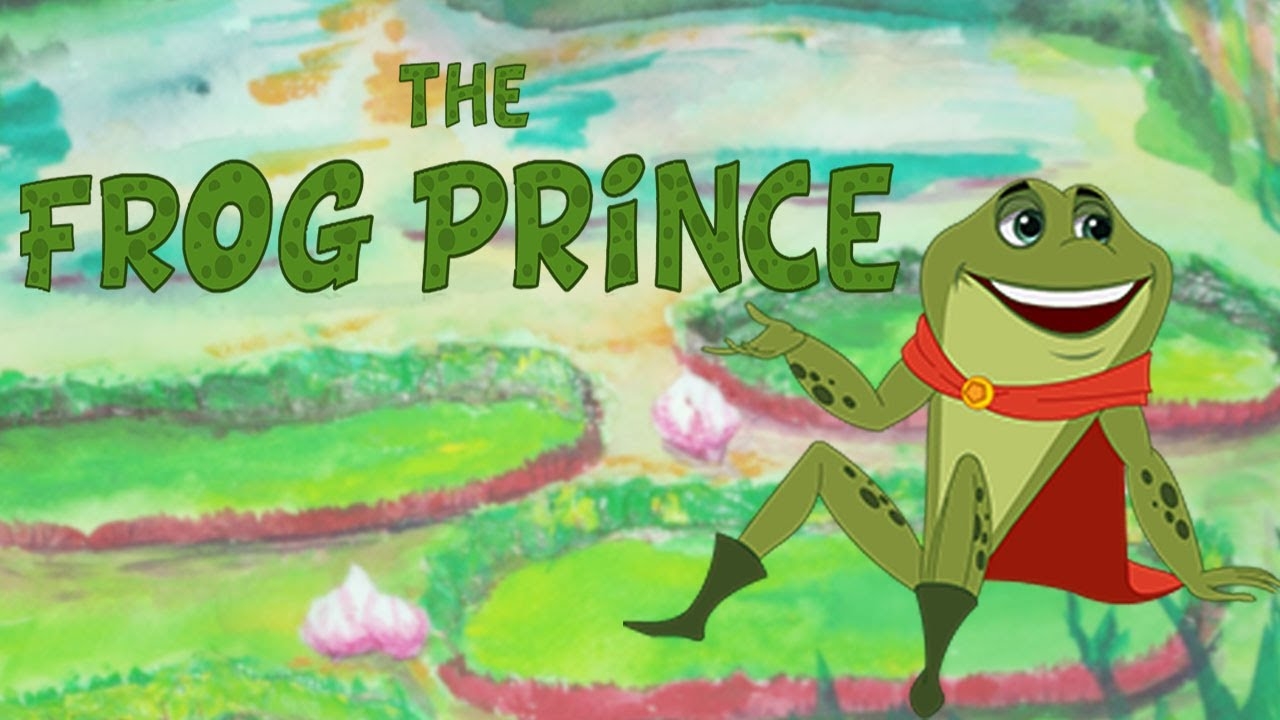 |
| Photo: Disney |
There was once a king who had beautiful daughters. The youngest often liked to play with a golden ball near a pond, in the middle of a forest near the palace. One day, her ball fell into the pond, and it was much too deep for the princess to get, but she was given help by a kind frog who told her that her tears would even melt the stones. He told her that he would get her ball for her, if she allowed him to be her playmate and eat from her plate, drink from her cup and stay with her. She agreed, but she did not keep her word when the frog returned her ball to her. Instead, she ran home and left him behind.
The next morning the frog showed up at her home, and he asked that she, please keep her end of the bargain. The king, upon hearing what happened, ordered his beloved daughter to keep her promise. So, she was forced to allow the frog to eat from her plate, drink from her cup and stay with her.
The morning after, the frog told the princess that he would leave her forever if she did one last thing for him, which was to give him a kiss. She, being glad to be rid of him, agreed and kissed him immediately. At once, the frog turned into a handsome young prince. He had been cursed, and the only thing that could break the curse was the kiss of a princess.
Another lesson in not judging anyone by their appearance, this story also has the added benefit of teaching your children that it benefits to keep your promises.
The Grimms' source is unclear, but it apparently comes from an oral tradition of Dortchen Wild's family in Kassel. The volume 2 of the first edition of Kinder- und Hausmärchen, published in 1815, included a variation of this story entitled Der Froschprinz (The Frog Prince), published as tale no. 13. As this version was not included in later editions, it has since remained relatively unknown.
It has been postulated by some scholars that parts of the tale may extend back until at least Roman times; an aspect of the story is referred to in Petronius' Satyricon, in which the character Trimalchio remarks, "qui fuit rana nunc est rex" ("The man who was once a frog is now a king"). Other scholars, however, argue that this may actually be a jab at the emperor Nero, who was often mockingly compared to a frog.
Folkorist Stith Thompson suggested that the story of the Frog King in the German tradition began with a 13th-century literary tale written in Latin.
Read More: The Frog Prince: Full Text Story, Video in English Version, Life Lessons
10. Puss in Boots - Life Lessons and Meaning
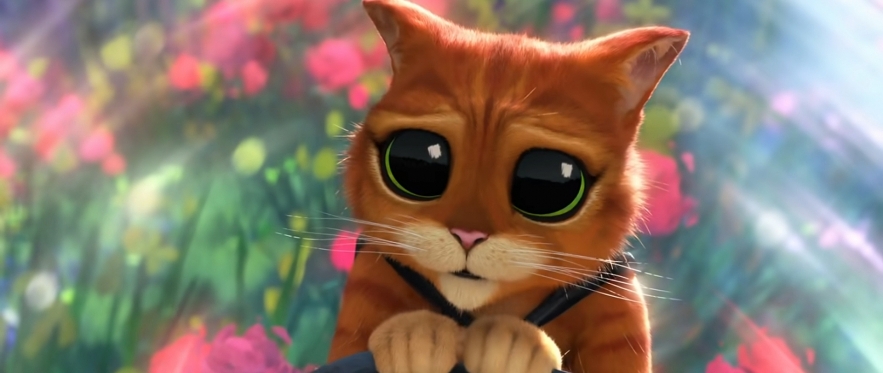 |
| Puss in Boots |
More recently, the irrepressible Puss found new fans and stole the show in 2001’s Shrek movies. Voiced by Antonio Banderas, his signature introduction—”Puss…in Boots”—became instantly recognizable. The character was so beloved that he got his own spinoff movie, the 2012 flick Puss in Boots. If you have young kids, pick up one of the fiction books based on the lovable feline.Plenty of fairy tale stories have animal helpers, but in this one, the animal is the star. Puss is a bold, swaggering trickster who masquerades as the servant of a great nobleman.
The story was probably first recorded in 16th-century Italy, but Puss seems to have acquired his swashbuckling boots about 100 years later in France, in the same book of stories that features Cinderella, Sleeping Beauty, and Beauty and the Beast, and he’s been rocking them ever since. In an age when the poor mostly went barefoot, shoes were an important status symbol, and clearly those boots were made for walking because Puss has managed to travel astonishingly far around the world. Scholars say the story “has been found in all parts of Europe, across Siberia, [and] onward to India, Indonesia, and the Philippines.”
"Puss in Boots" (Italian: Il gatto con gli stivali) is an Italian fairy tale, later spread throughout the rest of Europe, about an anthropomorphic cat who uses trickery and deceit to gain power, wealth, and the hand of a princess in marriage for his penniless and low-born master.
The oldest written telling is by Italian author Giovanni Francesco Straparola, who included it in his The Facetious Nights of Straparola (c. 1550–1553) in XIV–XV. Another version was published in 1634 by Giambattista Basile with the title Cagliuso, and a tale was written in French at the close of the seventeenth century by Charles Perrault (1628–1703), a retired civil servant and member of the Académie française. There is a version written by Girolamo Morlini, from whom Straparola used various tales in The Facetious Nights of Straparola. The tale appeared in a handwritten and illustrated manuscript two years before its 1697 publication by Barbin in a collection of eight fairy tales by Perrault called Histoires ou contes du temps passé. The book was an instant success and remains popular.
Perrault's Histoires has had considerable impact on world culture. The original Italian title of the first edition was Costantino Fortunato, but was later known as Il gatto con gli stivali (lit. The cat with the boots); the French title was "Histoires ou contes du temps passé, avec des moralités" with the subtitle "Les Contes de ma mère l'Oye" ("Stories or Fairy Tales from Past Times with Morals", subtitled "Mother Goose Tales"). The frontispiece to the earliest English editions depicts an old woman telling tales to a group of children beneath a placard inscribed "MOTHER GOOSE'S TALES" and is credited with launching the Mother Goose legend in the English-speaking world.
"Puss in Boots" has provided inspiration for composers, choreographers, and other artists over the centuries. The cat appears in the third act pas de caractère of Tchaikovsky's ballet The Sleeping Beauty, appears in the sequels and self-titled spin-off to the animated film Shrek and is signified in the logo of Japanese anime studio Toei Animation. Puss in Boots is also a popular pantomime in the UK.
Read More: Puss in Boots: Full Text Story, Video in English Version, Life Lessons
History of Fairy TalesIn order to understand the history of fairy tales, readers need to be aware of for whom original fairy tales were really written. While today parents love relating their favorite fairy tales to their own children, the dark and often gruesome plot lines of the original stories were intended for adult audiences, not youngsters. Many of the fairy tales that are repeated today date back to the 17th century and earlier. As these tales were passed down from one century to the next, they were often altered to remove some of the more ghastly and frightening elements and to make them more appropriate for a younger audience. The term "fairy" was thought to have been taken from the French "contes des fee", and many of the fairy tales we read today are based on tales from French literature which often featured the ethereal creatures. In fact, Charles Perrault, a well-known writer of fairy tales, often wrote his stories to be presented at the court of Versailles, and these typically featured fairies as well as a moralistic theme. While writers like the Grimm Brothers, who collected German tales, Perrault, and often Hans Christian Anderson are often the first authors named when discussing the history of fairy tales, their origin goes back much further than the 17th century, and many of these stories are actually just retellings of age-old tales, many created by women and retold throughout history. |
 Top 500+ Meaningful and Inspirational Wishes, Quotes for Kids Of All Ages Top 500+ Meaningful and Inspirational Wishes, Quotes for Kids Of All Ages On International Children's Day (June 1) or any other day, parents should send their children the best and most meaningful wishes and messages. |
 5 Things to Teach Kids to Not to Become A Fool 5 Things to Teach Kids to Not to Become A Fool Parents need to teach their children 5 things, so that children can be good people, not stupid people. |
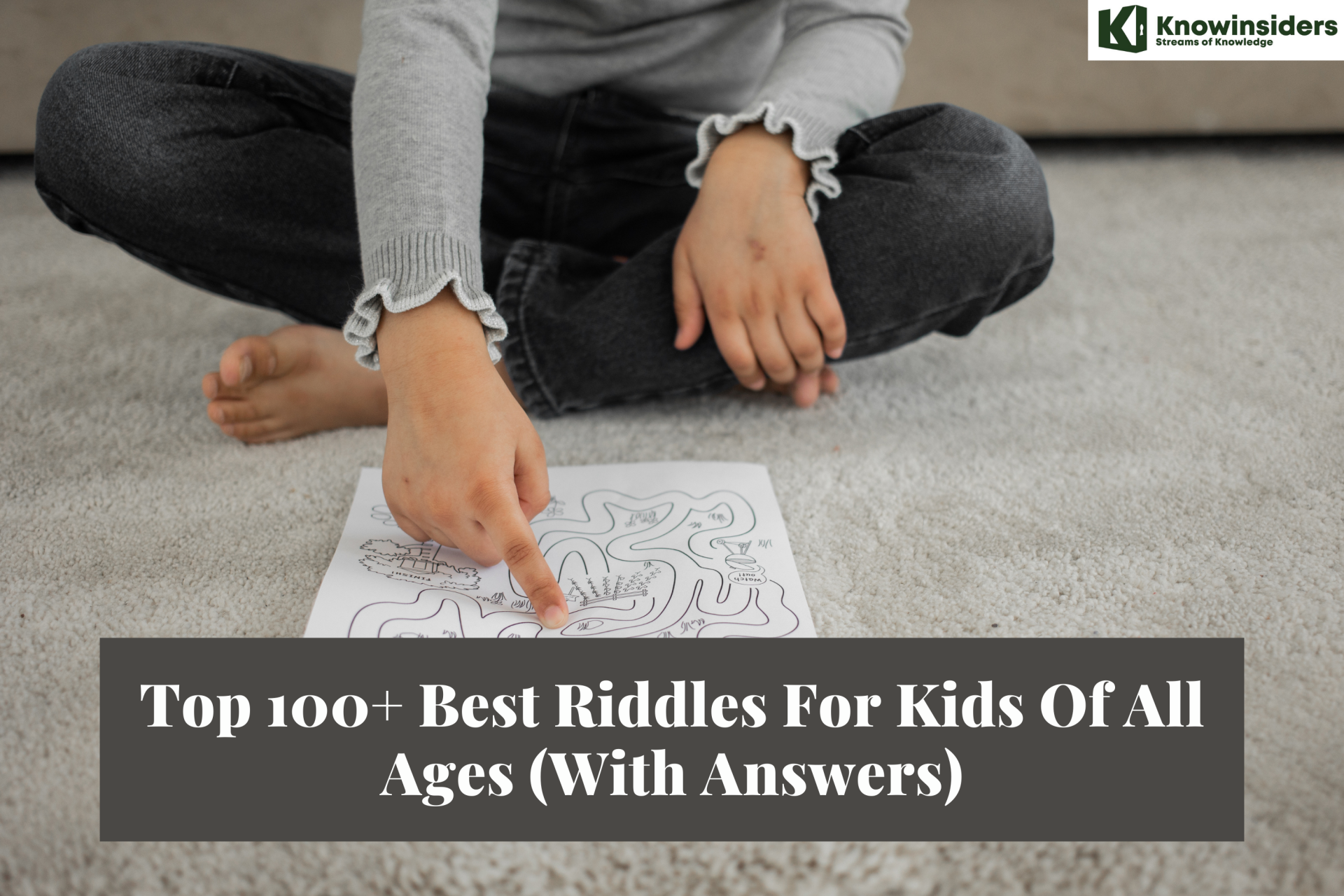 Top 100+ Best Riddles For Kids Of All Ages With Best Answers Top 100+ Best Riddles For Kids Of All Ages With Best Answers Riddles for kids may seem easy, but you'll have to be sharp to solve them. These are 100 awesome riddles for kids of all ages. ... |
 10 Most Beautiful Towns Like A Fairy Tale In Europe 10 Most Beautiful Towns Like A Fairy Tale In Europe You will feel like being lost in fairty tale lands once stepping into these European towns. Let's explore Top 10 Most Beautiful Towns Like A ... |


























